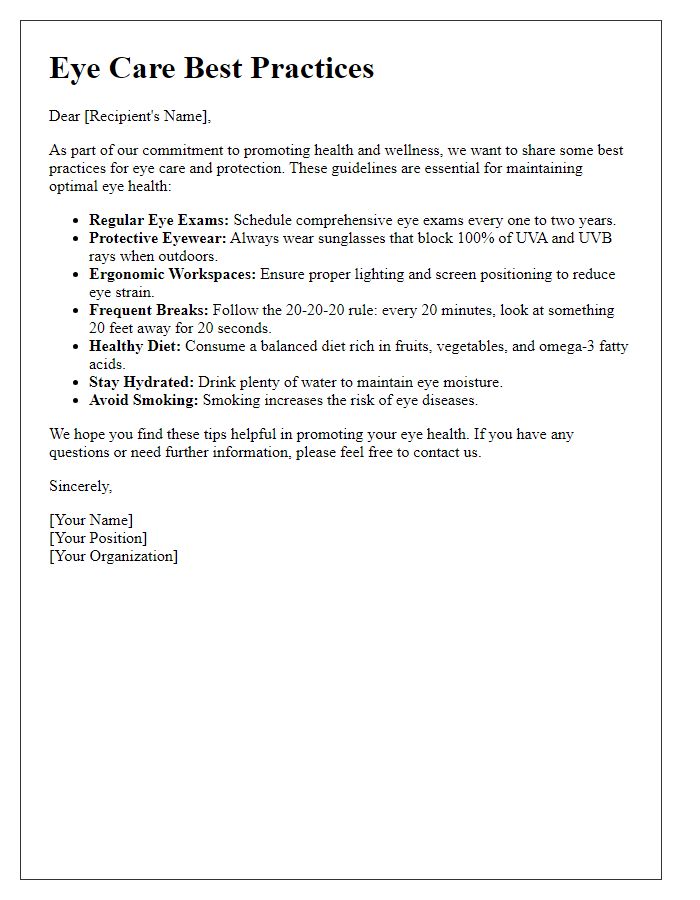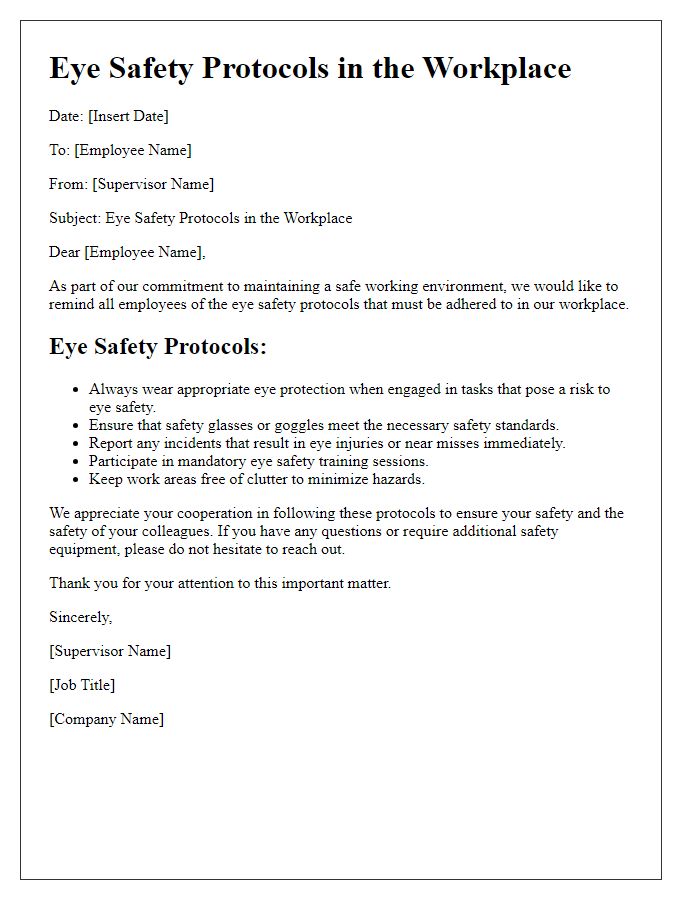Are you doing enough to protect your precious peepers? Eye health is often overlooked, yet it's crucial for our overall well-being. From simple daily habits to workplace safety measures, ensuring your vision remains sharp is easier than you might think. Dive into our article to discover essential eye care tips and practices that can help you maintain your eyesight for years to come!

Promotions of regular eye exams
Regular eye exams, typically recommended every one to two years, play a crucial role in maintaining optimal eye health and overall well-being. During these comprehensive evaluations, an eye care professional can identify common vision problems, such as myopia (nearsightedness) or hyperopia (farsightedness), as well as more serious conditions like glaucoma and macular degeneration. Routine assessments are particularly important for individuals over the age of 40, as eye-related issues become more prevalent with age. Additionally, eye exams can help reveal systemic health issues, including diabetes and cardiovascular diseases, showcasing the interconnection between eye health and general health. Incorporating protective measures, such as wearing UV-blocking sunglasses, can further safeguard vision against harmful ultraviolet light exposure during outdoor activities.
Guidelines for screen time usage
Excessive screen time can lead to digital eye strain, affecting visual comfort. The American Optometric Association recommends the 20-20-20 rule: every 20 minutes, take a 20-second break and look at something 20 feet away. This technique helps to reduce eye fatigue. Blue light emitted from screens can disrupt sleep patterns, particularly if used in the evening. Utilizing blue light filtering apps on devices can minimize this impact. Adequate lighting is essential; screens should be illuminated in a well-lit room to prevent glare and reduce strain. Proper distance is also important; screens should be positioned about an arm's length away to optimize viewing comfort. Regular eye exams, recommended every one to two years, can detect and address any issues early on.
Information on protective eyewear
Protective eyewear plays a crucial role in maintaining optimal eye health and safety, particularly in environments with potential hazards. Safety glasses, such as ANSI Z87.1 compliant eyewear, provide essential protection against flying debris and harmful particles. For those working in construction or manufacturing, polycarbonate lenses offer impact resistance, capable of withstanding high-velocity projectiles. UV-blocking sunglasses are vital for outdoor activities, shielding eyes from harmful ultraviolet rays, which can lead to conditions like cataracts. Regular usage of blue light blocking glasses is recommended for individuals frequently using digital screens, as prolonged exposure can cause digital eye strain and discomfort. Proper fit is essential; eyewear should remain secure without slipping, ensuring maximum protection during use.
Recommendations for dietary support
A balanced diet plays a crucial role in maintaining optimal eye health, with specific nutrients supporting vision. Vitamin A, found in foods like carrots (containing beta-carotene), is essential for good eyesight and can prevent night blindness. Omega-3 fatty acids, abundant in fatty fish species such as salmon and sardines, contribute to retinal health and may lower the risk of age-related macular degeneration (AMD). Leafy greens, particularly spinach and kale, provide lutein and zeaxanthin, antioxidants that protect against harmful blue light exposure. Citrus fruits, including oranges and grapefruits, are rich in vitamin C, an antioxidant linked to lowering the risk of cataracts. Regular consumption of nuts, especially walnuts and almonds, supplies essential fatty acids and vitamin E, both vital for maintaining eye tissue integrity. Hydration is equally important; drinking adequate water keeps eyes lubricated and reduces the likelihood of dry eye syndrome, a common issue in various age groups.
Tips for workplace eye safety
Workplace eye safety is crucial for maintaining optimal vision health among employees in various sectors. Regular eye exams, at least every two years, are essential for early detection of potential issues. Utilizing personal protective equipment (PPE), such as safety glasses or goggles, significantly reduces the risk of injury from flying debris, chemical splashes, and harmful radiation, especially in construction sites or laboratories. Proper workstation ergonomics, including adjusting monitor height and glare reduction, can prevent eye strain and discomfort in office settings. Adequate lighting, especially in environments like warehouses or manufacturing plants, is vital for minimizing shadows and improving visibility. The 20-20-20 rule, where individuals take a 20-second break to look at something 20 feet away every 20 minutes, helps to alleviate digital eye strain caused by prolonged screen exposure. Awareness of potential hazards, combined with regular training sessions, fosters a safer work environment and prioritizes employee eye health.













Comments